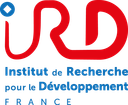H. Kuhlmann, T. Freudenthal, P. Helmke, and H. Meggers (2004)
Reconstruction of paleoceanography off NW Africa during the last 40,000 years: influence of local and regional factors on sediment accumulation
Marine Geology, 207(1-4):209-224.
A set of 43 sediment cores from around the Canary Islands is used to characterise this region, which intersects meridional climatic regimes and zonal productivity gradients in a high spatial resolution. Using rapid and nondestructive core logging techniques we carried out Fe intensity and magnetic susceptibility (MS) measurements and created a stack on the basis of five stratigraphic reference cores, for which a stratigraphic age model was available from [delta]18O and 14C analyses on planktonic foraminifera. By correlation of the stack with the Fe and MS records of the other cores, we were able to develop age depth models at all investigated sites of the region. We present the bulk sediment accumulation rates (AR) of the Canary Islands region as an indicator of shifts in the upwelling-influenced areas for the Holocene (0-12 ky), the deglaciation (12-18 ky) and the last glacial (18-40 ky). General observations are an enhanced productivity during glacial times with highest values during the deglaciation. The main differences between the analysed time intervals we interpret as result of the sea-level effects, changes in the extent of high productivity areas, and current intensity.
Actions sur le document










